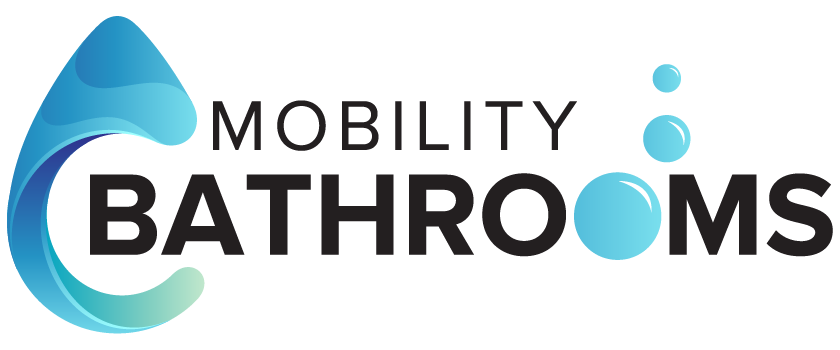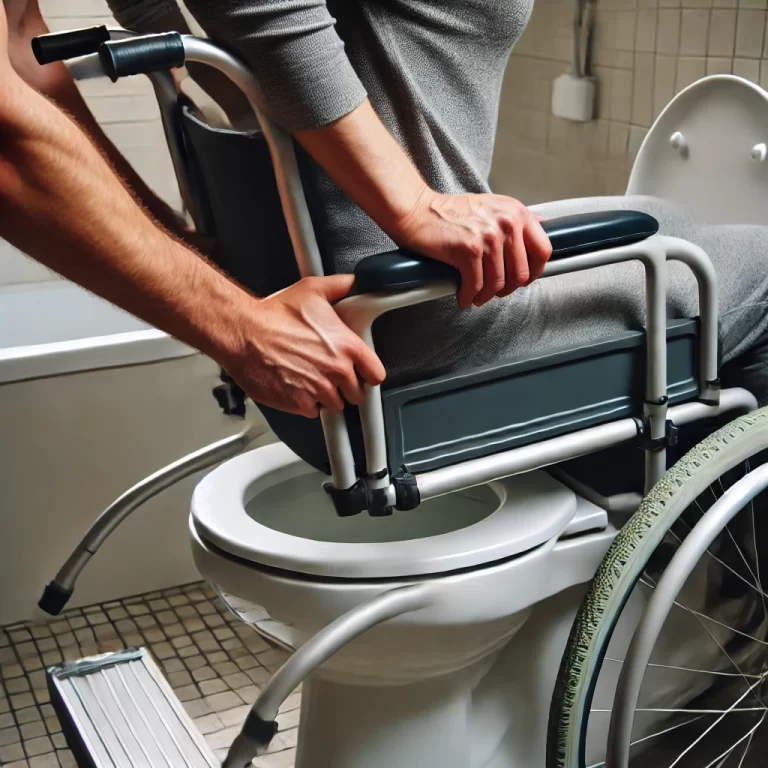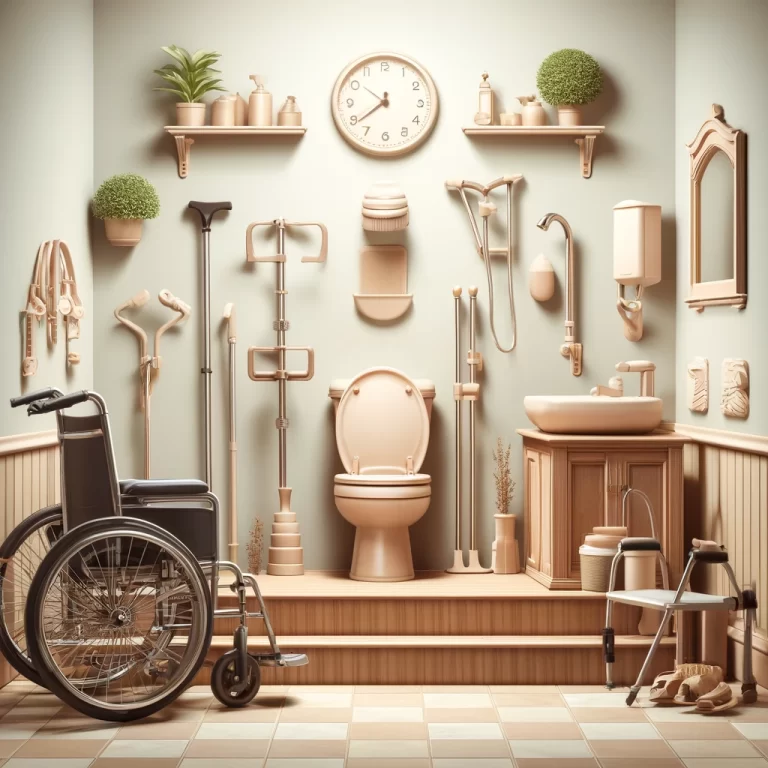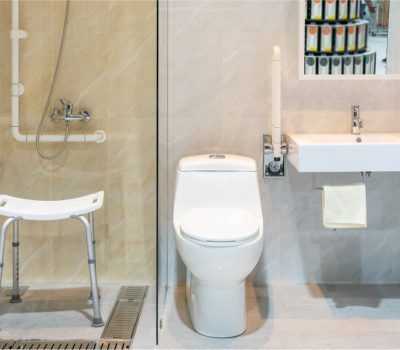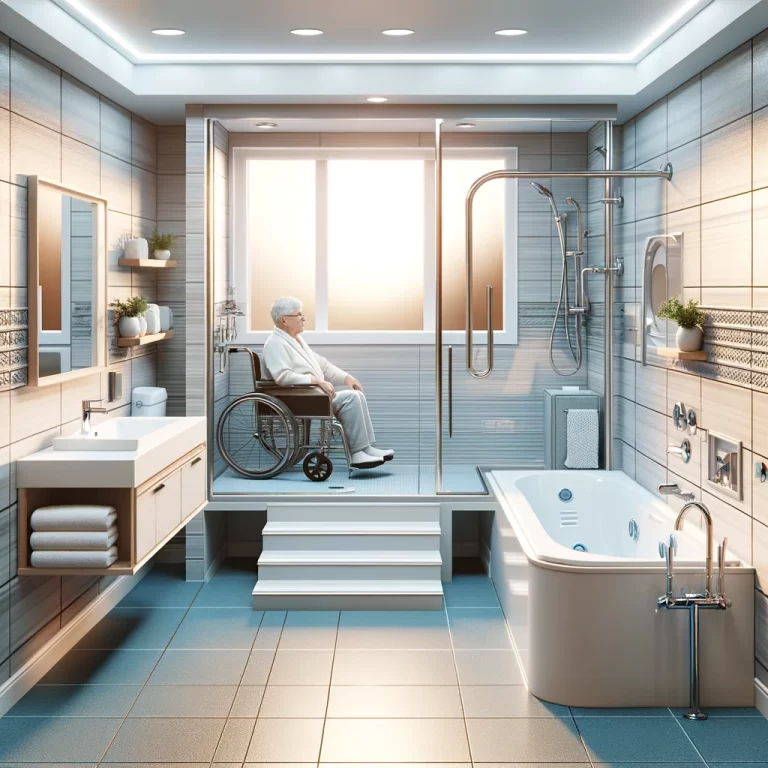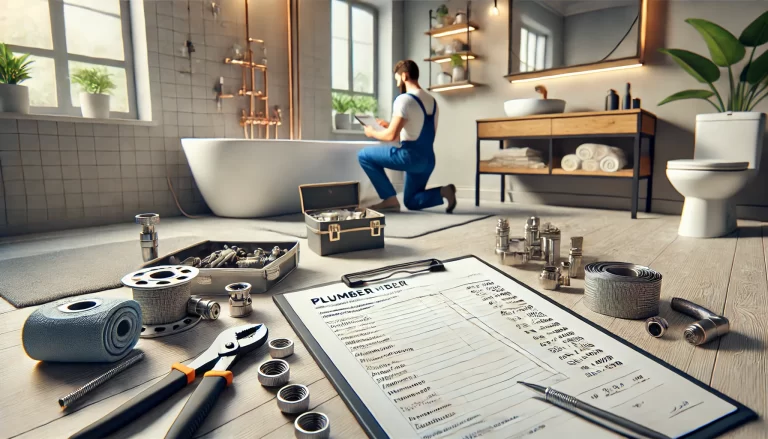What is a fully accessible bathroom
Are you looking to create a fully accessible bathroom but not sure where to start?
In this article, we will explore the requirements, benefits, and features of a fully accessible bathroom.
From wide doorways and grab bars to roll-in showers and adjustable height fixtures, we will discuss how to make an existing bathroom fully accessible.
We will provide tips for designing a functional and inclusive bathroom that meets the needs of all users.
Let’s dive in and learn more about creating a fully accessible bathroom that is both practical and stylish.
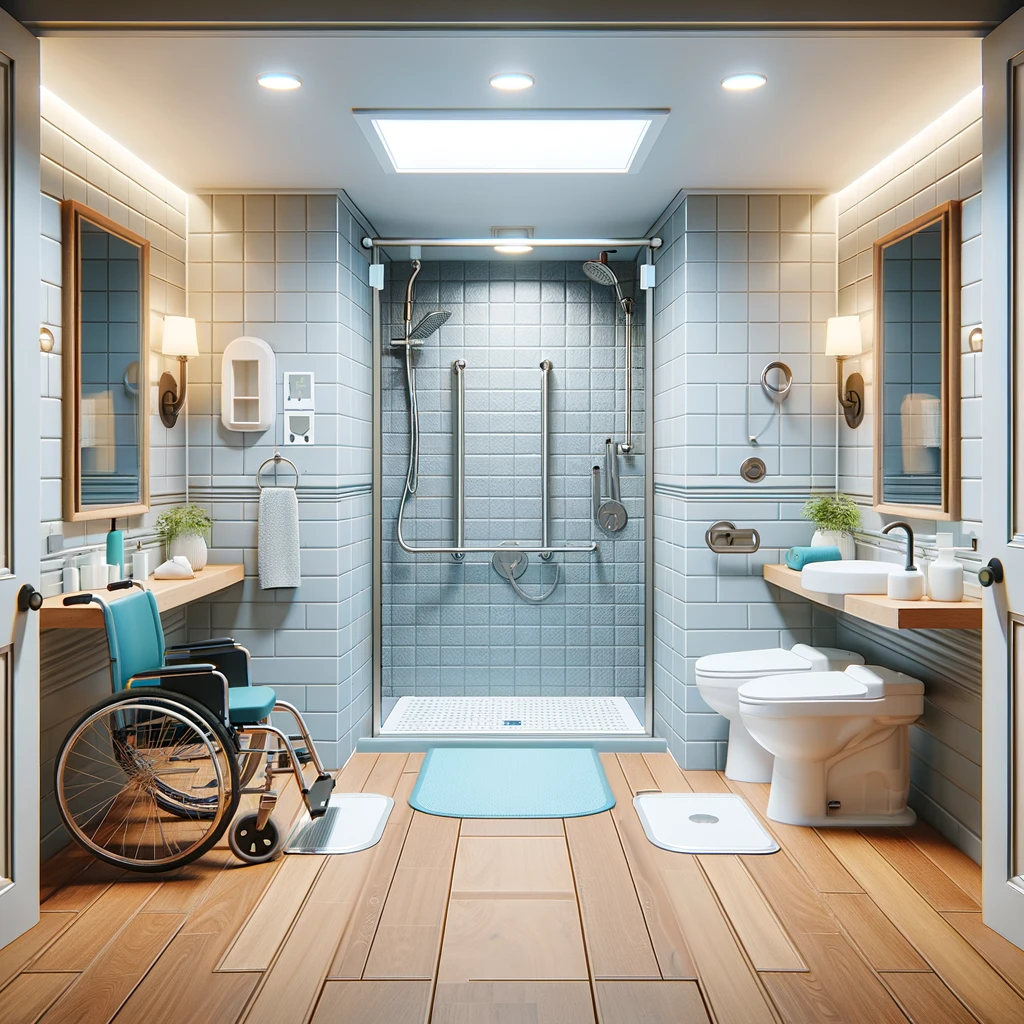
What Is a Fully Accessible Bathroom?
A fully accessible bathroom is a specially designed space that accommodates the needs of individuals with disabilities or mobility limitations, ensuring they can navigate and utilise the facilities comfortably and safely.
These bathrooms incorporate universal design principles to create an environment that is usable by people of all ages and abilities.
- Key features include a zero-threshold shower entry for easy wheelchair access,
- grab bars strategically placed to aid in movement and stability,
- adjustable-height sink and mirrors to cater to varying needs, and
- ample space to manoeuvre a wheelchair.
The layout is carefully planned, ensuring there is enough turning space, clear paths, and sufficient room for assistance devices. Elements like non-slip flooring, adjustable lighting, and lever handles on fixtures enhance usability and safety.
What Are the Requirements for a Fully Accessible Bathroom?
The requirements for a fully accessible bathroom encompass specific design elements and features that cater to the needs of wheelchair users and individuals with mobility challenges, ensuring a safe and functional environment.
One crucial aspect in designing an accessible bathroom is the incorporation of grab rails strategically placed around the toilet, shower, and bath areas to provide stability and support. These rails should be securely installed and have a weight-bearing capacity to ensure safety for users. Adjustable height facilities for basins and toilets are essential to accommodate individuals of varying heights and mobility aids. Ensuring adequate space for wheelchair manoeuvrability, with wide doorways and turning circle, is vital for ease of access and navigation within the bathroom.
What Are the Benefits of Having a Fully Accessible Bathroom?
Having a fully accessible bathroom offers numerous benefits, including increased independence, enhanced safety, and improved comfort for individuals with disabilities or mobility limitations.
By incorporating features such as grab rails, roll-in showers, adjustable basins, and raised toilets, an accessible bathroom provides a space where people can navigate and use facilities with ease, minimising the risks of accidents and ensuring a sense of security and freedom. Not only does it promote self-sufficiency, but it also boosts the overall well-being of users by eliminating barriers and constraints that may impede their daily routines.
What Are the Features of a Fully Accessible Bathroom?
The features of a fully accessible bathroom include wide doorways, grab bars, roll-in showers, adjustable height sink and toilet, and non-slip flooring to ensure safety and convenience for users with mobility challenges.
Wide doorways provide easy access for wheelchairs, ensuring smooth entry and exit.
- Grab bars strategically positioned around the bathroom offer stability and support for individuals with limited mobility.
- A roll-in shower eliminates barriers for wheelchair users, enabling seamless showering experiences.
- Adjustable height sink and toilet fixtures add versatility, accommodating users of different heights and needs.
- The non-slip flooring reduces the risk of slips and falls, prioritising safety within the bathroom environment.
Wide Doorways and Hallways
Wide doorways and corridors in an accessible bathroom are essential to accommodate different wheelchair sizes and provide easy access for users with mobility aids.
These spacious entry points play a crucial role in ensuring that individuals using wheelchairs can navigate the bathroom with ease and independence. Wheelchairs come in various widths, and having wider doorways allows for a more comfortable entry and manoeuvrability within the space.
The design of the bathroom should consider the turning circle of wheelchairs, requiring corridors to be wide enough to allow for smooth rotations without any obstacles. This attention to detail not only enhances accessibility but also contributes to the overall usability and comfort of the bathroom for individuals with mobility challenges.
Grab Bars and Handrails
Grab rails and handrails in an accessible bathroom provide crucial support and stability for users, particularly those with arthritis or mobility limitations, enhancing safety and ease of use.
These essential bathroom features play a significant role in creating a safe and comfortable environment for individuals with varying physical abilities. Not only do grab rails provide added assistance when moving around the bathroom, but they also promote independence and confidence in daily activities like showering and using the toilet.
Handrails offer extra security, aiding in balance and preventing falls, especially in wet or slippery conditions. The strategic placement of these fixtures near showers, bathtubs, and toilets ensures that users can navigate the space with increased stability and reduced risk of accidents.
By incorporating grab rails and handrails, the overall accessibility of the bathroom is enhanced, allowing individuals to maintain their dignity and autonomy while feeling secure and supported.
Roll-in Showers
Roll-in showers, also known as wet rooms, are designed without barriers to allow easy access for wheelchair users and individuals with mobility challenges, offering a convenient and inclusive showering experience.
This innovative design feature makes roll-in showers an ideal choice for creating a fully accessible bathroom that caters to the diverse needs of users.
With spacious layouts and no step-up entrance, these showers eliminate the obstacles faced by individuals with mobility limitations, ensuring a seamless transition into the shower area.
The open floor plan of roll-in showers not only enhances accessibility but also provides a sense of freedom and independence during daily routines.
The smooth, non-slip flooring in these showers offers added safety, preventing slips and falls for users with varying mobility levels.
Adjustable Height Sink and Toilet
An adjustable height sink and toilet in an accessible bathroom cater to the diverse needs of users, allowing for customisation based on individual preferences and requirements for comfort and accessibility.
These fixtures play a vital role in providing a user-friendly experience for individuals of all ages and abilities. The ability to adjust the height of the sink and toilet ensures that the bathroom can be easily accessed and used by people with mobility challenges, such as wheelchair users or individuals with limited reach. By offering adjustable features, these fixtures promote independence and autonomy, enabling users to comfortably use the facilities without assistance.
Non-slip Flooring
Non-slip flooring is a crucial feature in an accessible bathroom, ensuring safety and preventing accidents for users, especially those with mobility challenges or disabilities.
Having a bathroom with non-slip flooring is essential for maintaining a secure and stable environment. The textured surface of non-slip flooring provides traction, reducing the risk of slips and falls, which are common in wet areas like bathrooms.
This type of flooring is particularly beneficial for individuals who may have difficulty with balance or coordination. By incorporating non-slip flooring, the bathroom becomes a safer space for everyone, promoting independence and confidence for users with varying levels of mobility.
Non-slip flooring options come in various designs and materials, allowing for both functionality and aesthetic appeal in a fully accessible bathroom.
How to Make an Existing Bathroom Fully Accessible?
Converting an existing bathroom into a fully accessible space involves modifications such as widening doorways, installing grab bars, converting a bath into a roll-in shower, adjusting basin and toilet heights, and replacing flooring with non-slip materials to enhance accessibility and safety.
Another crucial step in making a bathroom wheelchair-accessible is to ensure there is enough space for turning circle. This can involve rearranging elements like the toilet, basin, and shower to allow for smooth navigation.
Incorporating a fold-down shower seat can provide convenience and comfort for users with mobility challenges. It allows for seated showering while remaining versatile for other users.
Widening Doorways and Hallways
Widening doorways and hallways in an existing bathroom is a fundamental step towards improving accessibility for wheelchair users and individuals with mobility challenges, allowing for easier navigation and maneuverability.
When considering the process of widening bathroom doorways and hallways, several key factors come into play. It involves assessing the current layout and determining the most strategic areas for expansion based on user needs and the existing structural constraints.
Following this initial assessment, precise measurements are taken to ensure that the widening process is carried out accurately. This may involve adjusting walls, relocating fixtures, or even reconfiguring the overall layout of the bathroom.
By increasing the space available for wheelchair movement, individuals can experience a significant improvement in their daily routines. The enhanced accessibility not only fosters independence but also contributes to a more comfortable and convenient living environment.
Installing Grab Bars and Handrails
Installing grab bars and handrails in an existing bathroom provides essential support and assistance for users with mobility limitations, enhancing safety and convenience within the space.
When positioning the grab bars, it’s crucial to ensure they are mounted at an optimal height, typically between 33-36 inches from the floor, to offer adequate leverage and stability. Additionally, consider the location of the bars, strategically placing them near the toilet, shower, and bath to assist users in navigating these areas safely. To maintain durability, opt for grab bars made of corrosion-resistant materials such as stainless steel or brass, which can withstand moisture and frequent use. Consult a professional for proper installation to guarantee secure attachment to the wall studs for maximum support.
Converting a Bathtub into a Roll-in Shower
Converting a bath into a roll-in shower in an existing bathroom enhances accessibility and convenience for users, especially those with mobility challenges or wheelchair users, by eliminating barriers and promoting independence.
When considering the transformation from a traditional bath to a roll-in shower, it is essential to begin with a thorough evaluation of the space and layout of the existing bathroom.
Measurements need to be taken to ensure that the new roll-in shower will fit seamlessly into the designated area.
It’s crucial to select high-quality materials that are durable and water-resistant to create a safe and functional shower environment.
Incorporating features such as grab rails, non-slip flooring, and adjustable shower heads can further enhance the accessibility and comfort of the roll-in shower.
By making these modifications, individuals can enjoy a more inclusive and user-friendly bathing experience, promoting confidence and self-sufficiency in their daily routines.
Installing an Adjustable Height Sink and Toilet
Installing an adjustable height sink and toilet in an existing bathroom allows for customisation based on user needs and preferences, promoting comfort, accessibility, and inclusivity within the space.
In terms of enhancing the functionality of a bathroom, adjustable fixtures play a crucial role in meeting diverse user requirements. These fixtures can be tailored to specific heights, accommodating individuals with varying mobility levels.
- This level of customisation ensures that the sink and toilet are easily accessible to all occupants, whether they are tall, short, or have mobility challenges.
- By incorporating adjustable features, such as the ability to raise or lower the sink or toilet to a comfortable level, the bathroom becomes more user-friendly for individuals of all ages and abilities.
By providing such adaptable solutions, the design of the bathroom promotes independence and self-sufficiency, allowing users to customise their experience for maximum comfort and convenience.
Replacing Flooring with Non-slip Material
Replacing flooring with non-slip material in an existing bathroom is essential to enhance safety, prevent slips, and create a secure environment for users with mobility challenges or disabilities.
When considering the process of replacing standard flooring with non-slip material, it is crucial to first assess the current condition of the bathroom floor. Slip-resistant surfaces can greatly reduce the risk of accidents, especially in environments prone to moisture and splashes. Choosing materials like textured tiles or special non-slip coatings can significantly improve the overall safety of the bathroom. Incorporating grab bars and handrails in strategic locations can further enhance accessibility and stability for individuals with varying mobility levels.
What Are Some Tips for Designing a Fully Accessible Bathroom?
Designing a fully accessible bathroom involves considering the specific needs of users, incorporating universal design principles, and utilising durable, low-maintenance materials to create a functional and inclusive space for individuals with disabilities or mobility limitations.
When planning the layout, ensure there is enough space for wheelchair maneuverability and grab bars at appropriate heights for support. Installing a curbless shower with a foldable seat offers convenience and safety. Opt for slip-resistant flooring to prevent accidents, and choose lever-style taps and handles for easy operation. Ensuring adequate lighting and color contrast aids those with visual impairments. Consider adjustable showerheads and handheld sprays for varied user abilities to enhance usability.
Consider the Needs of the User
When designing an accessible bathroom, it is crucial to consider the specific needs and preferences of users, ensuring that the space is tailored to provide comfort, convenience, and accessibility through the selection of appropriate products and fixtures.
One of the key aspects of user-oriented design in creating an accessible bathroom is the focus on personalised solutions. By customising the layout and features to match the requirements of individuals, such as grab bars for stability or adjustable shower heads for varying heights, the bathroom becomes a functional and safe space. Comfort considerations play a vital role, encompassing factors like non-slip flooring, ample lighting, and easily reachable storage options. Product selection is equally important, with choices ranging from walk-in tubs with seating to wall-mounted sinks for wheelchair accessibility.
Incorporate Universal Design Principles
Incorporating universal design principles in an accessible bathroom ensures that the space is usable by individuals of all ages and abilities, promoting inclusivity and accessibility through thoughtful and adaptable design features.
When designing bathrooms with universal design in mind, it’s essential to consider various factors that can make a significant difference in the user experience. Elements like grab bars strategically placed for support, non-slip flooring for added safety, and lever-style handles for ease of use are integral components. Ensuring sufficient space for manoeuvrability, choosing contrasting colours for visual clarity, and incorporating adjustable height features in fixtures contribute to a more inclusive environment. These considerations aim to create a space that caters to diverse needs and enables everyone to navigate and use the bathroom comfortably.
Use Durable and Low-maintenance Materials
Opting for durable and low-maintenance materials in an accessible bathroom helps enhance longevity, ease of upkeep, and overall functionality, with features like a thermostatic shower providing added comfort and convenience for users.
When considering materials for an accessible bathroom, selecting options that are resistant to wear and tear is crucial. Durable materials such as fibreglass-reinforced plastics or stainless steel not only offer longevity but also reduce the need for frequent repairs and replacements. In addition, low-maintenance materials like ceramic tiles or acrylic surfaces make cleaning a breeze, ensuring a hygienic environment for users. Incorporating fixtures like grab rails and adjustable shower heads further enhance the comfort and safety of the space, making it a welcoming retreat for individuals of all abilities.
Frequently Asked Questions
What is a fully accessible bathroom?
A fully accessible bathroom is a bathroom that is specifically designed to meet the needs of individuals with disabilities. It is equipped with features and modifications that make it easier and safer for people with mobility limitations to use.
What are some features of a fully accessible bathroom?
Some features of a fully accessible bathroom include grab bars, non-slip flooring, wide doorways, and a roll-in shower or a bathtub with a transfer bench. These features provide stability, support, and accessibility for individuals with disabilities.
Who benefits from a fully accessible bathroom?
A fully accessible bathroom benefits individuals with disabilities, such as those who use mobility aids like wheelchairs, walkers, or canes. It also benefits the elderly and pregnant women, who may have difficulty with balance and movement in a standard bathroom.
Why is it important to have a fully accessible bathroom?
A fully accessible bathroom is important because it promotes independence, safety, and dignity for individuals with disabilities. It allows them to use the bathroom without assistance and reduces the risk of accidents or injuries.
Can a fully accessible bathroom be installed in any home?
Yes, a fully accessible bathroom can be installed in any home, as long as there is enough space for the necessary modifications. There are also portable or temporary accessibility options available for those who cannot make permanent changes to their homes.
Are there any laws or regulations regarding fully accessible bathrooms?
Yes, there are laws and regulations in place that require public buildings and businesses to provide accessible bathrooms for individuals with disabilities. These include the Americans with Disabilities Act (ADA) in the United States and the Accessibility for Ontarians with Disabilities Act (AODA) in Ontario, Canada.
